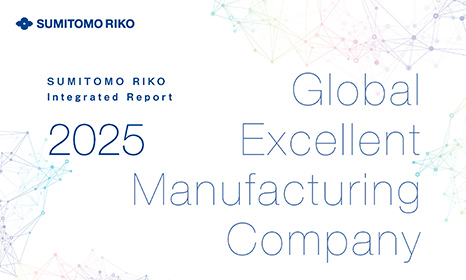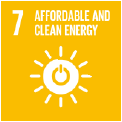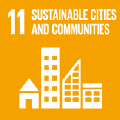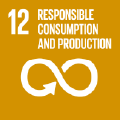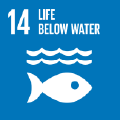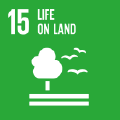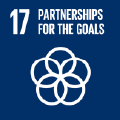Contributing to a Society in Harmony with Nature
Environment (E)
- Long-Term Environmental Vision and Environment 2029V
- Environmental Management
- Responding to Climate Change
- Responding to Water Risks
- Contributing to a Resource-Recycling Society
- Contributing to a Society in Harmony with Nature
- Appropriate Chemical Substance Management
- Environmental Communication
- Environmentally Friendly Products
Employees, Local Communities, Global Environment
Basic Approach
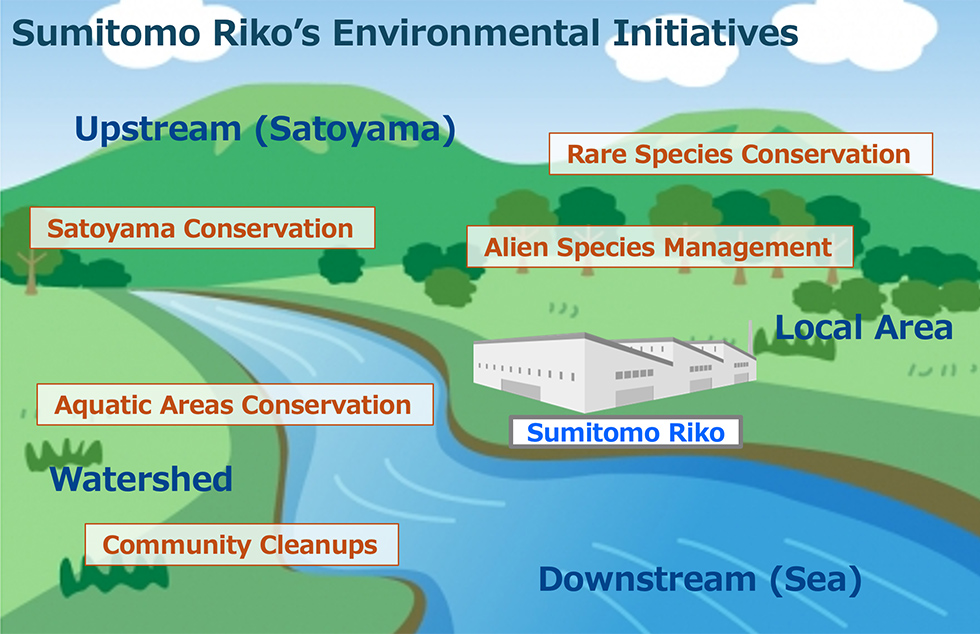
The Sumitomo Riko Group utilizes a diverse range of natural resources in our operations, including natural rubber, air, water, and minerals. We recognize our responsibility to ensure that our operations do not harm these valuable resources and that we preserve them for future generations. With this understanding as our foundation, our Long-Term Environmental Vision 2050 aims to promote sustainable practices and achieve a society in harmony with nature. Furthermore, we are committed to achieving a nature-positive status by 2030.
We are committed to conserving biodiversity and protecting endangered species through our activities in satoyama (traditional Japanese rural landscapes) and aquatic areas. We also take part in community cleanup efforts and plan to extend our environmental initiatives throughout our entire supply chain.
We are committed to conserving biodiversity and protecting endangered species through our activities in satoyama (traditional Japanese rural landscapes) and aquatic areas. We also take part in community cleanup efforts and plan to extend our environmental initiatives throughout our entire supply chain.
Initiatives for Creating a Society in Harmony with Nature
Satoyama Conservation Initiatives
The Sumitomo Riko Group collaborates with local governments and community members to engage in forest management and satoyama conservation efforts. Our activities include various initiatives based on agreements and contracts with local authorities as well as participation in community organizations, all tailored to meet the unique needs of each location.
In addition to our participation in forest maintenance tasks such as thinning and pruning, we enhance interactions between our employees and local residents through various events, leveraging these opportunities for environmental education.
In addition to our participation in forest maintenance tasks such as thinning and pruning, we enhance interactions between our employees and local residents through various events, leveraging these opportunities for environmental education.

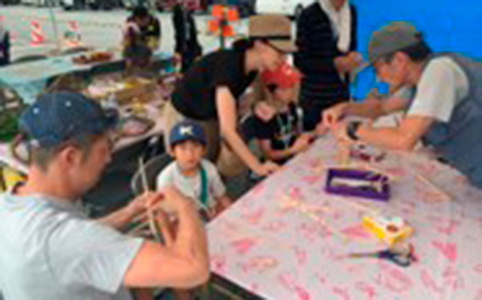
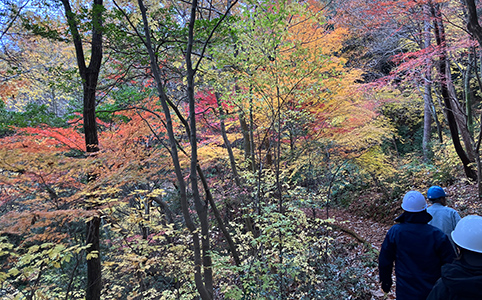
Aquatic Areas Conservation Initiatives
Aquatic Life Survey
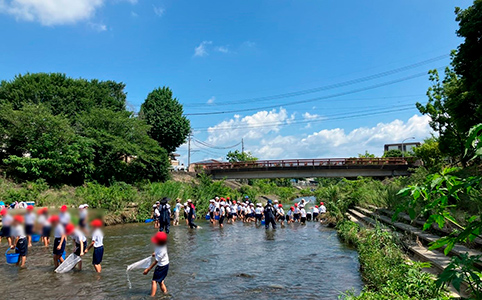
In Komaki City, where the Sumitomo Riko Head Office is located, elementary school students survey aquatic life in local rivers. This activity also serves as a means to assess water quality as part of their environmental education program. We support this initiative and participate in the annual event along the Oyama River, which flows adjacent to the Komaki Plant. During the survey, we assist students by ensuring their safety as they collect river organisms and help identify the species they gather.
Looking ahead, we are committed to supporting these waterside conservation activities in partnership with the local community.
Looking ahead, we are committed to supporting these waterside conservation activities in partnership with the local community.
Mangrove Planting
At SumiRiko Eastern Rubber (Thailand) Ltd. (SRK-ER), a mangrove planting project has been underway since 2014. In Rayong Province, where SRK-ER is located, approximately 1,500 mangrove saplings are planted each year, and their survival rates and growth are monitored.
Mangrove forests, often referred to as the cradle of life in the sea, play a crucial role in supporting a rich ecosystem teeming with diverse species. However, the decline of these forests in Thailand poses a significant threat to this invaluable ecosystem. SRK-ER is dedicated to advancing this project to sustain and enhance biodiversity. Moreover, mangrove forests are known for their ability to absorb CO2 and store substantial amounts of carbon, which helps mitigate climate change.
Mangrove forests, often referred to as the cradle of life in the sea, play a crucial role in supporting a rich ecosystem teeming with diverse species. However, the decline of these forests in Thailand poses a significant threat to this invaluable ecosystem. SRK-ER is dedicated to advancing this project to sustain and enhance biodiversity. Moreover, mangrove forests are known for their ability to absorb CO2 and store substantial amounts of carbon, which helps mitigate climate change.
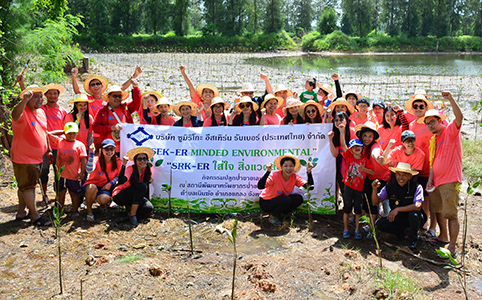
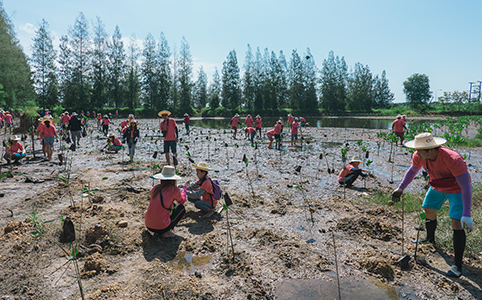
Rare Species Conservation Initiatives
Conservation of Mamenashi
The mamenashi, also known as the Callery pear, is a deciduous tree belonging to the genus Pyrus in the Rosaceae family, primarily found in the Tokai region of Japan. This species is classified as Endangered (EN) on the Japanese Ministry of the Environment's Red List and Critically Endangered (CR) on Aichi Prefecture's Red Data Book. From late March to early April, it bears delicate white flowers, and in autumn, it produces small fruits approximately 1 cm in size that resemble pears.
The Okusa no Mamenashi Jiseichi (Okusa Mamenashi Habitat), located in eastern Komaki City, is one of the largest natural habitats for mamenashi in Japan, where this species grows in clusters. This habitat has preserved an environment that allows mamenashi to undergo natural generational succession over many years, enhancing its ecological value and leading to its designation as a Natural Monument of Aichi Prefecture. Sumitomo Riko collaborates with the city of Komaki, local volunteers, and experts from local universities to conduct conservation activities, including seedling surveys, vegetation management, and observation events, all aimed at preserving the ecological integrity of this habitat for future generations.
The Okusa no Mamenashi Jiseichi (Okusa Mamenashi Habitat), located in eastern Komaki City, is one of the largest natural habitats for mamenashi in Japan, where this species grows in clusters. This habitat has preserved an environment that allows mamenashi to undergo natural generational succession over many years, enhancing its ecological value and leading to its designation as a Natural Monument of Aichi Prefecture. Sumitomo Riko collaborates with the city of Komaki, local volunteers, and experts from local universities to conduct conservation activities, including seedling surveys, vegetation management, and observation events, all aimed at preserving the ecological integrity of this habitat for future generations.
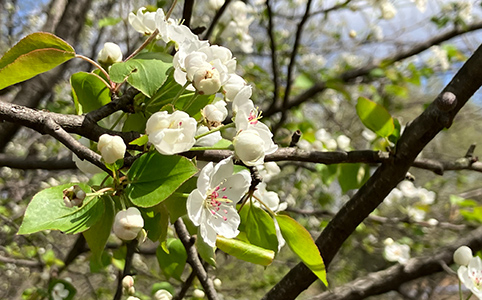
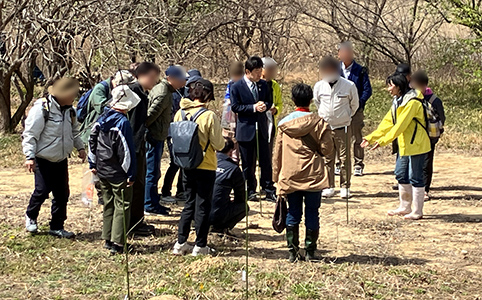
Invasive Alien Species Management Initiatives
Control of Lanceleaf Tickseed and Habitat Assessment
The Komaki Plant has been actively eradicating lanceleaf tickseed since 2022. This species is classified as an invasive alien species under the Invasive Alien Species Act due to its potential to significantly impact ecosystems in Japan. As the seeds of lanceleaf tickseed can attach to vehicles used for transportation or commuting, the Komaki Plant recognizes its responsibility to mitigate the spread of this species in the surrounding areas. To this end, we conduct habitat surveys and compile this information into maps, providing a clear overview of distribution patterns. This initiative is part of a larger effort to educate employees about the importance of biodiversity and ecosystem health.
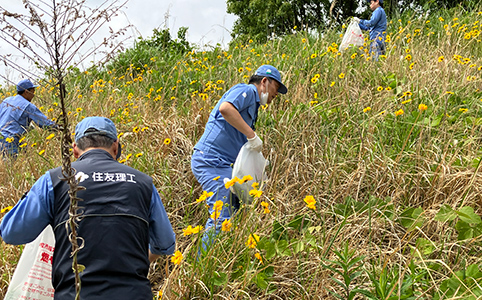
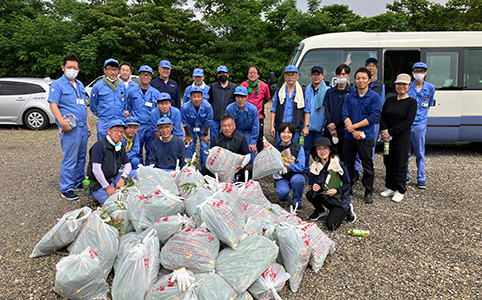
Local Area Conservation Initiatives
Cleanup Activities
Sumitomo Riko’s various plants and business locations, along with group companies such as Tokai Chemical Industries, Ltd., regularly organize cleanup activities in surrounding areas, supported by employee volunteers.
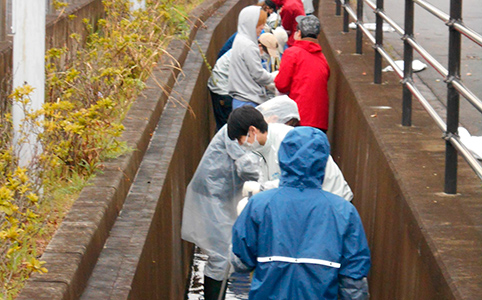
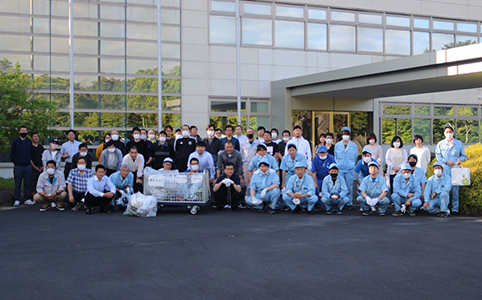
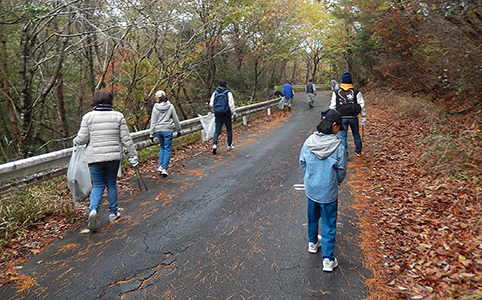
Oyama River Conservation
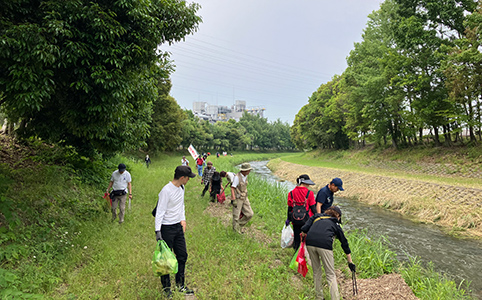
The Oyama River, adjacent to the Komaki Plant, plays an integral role in our business. To protect and enhance the natural environment, we regularly conduct weeding and cleanup activities in collaboration with local conservation organizations. Additionally, we participate in the Oyama River cleanup organized by the city of Komaki, bringing together our employees, their families, and local residents each year to engage in conservation initiatives.
Stakeholder Engagement
Hosting of the Komaki City Partnership Dialogue 2024 on Living in Harmony with Nature
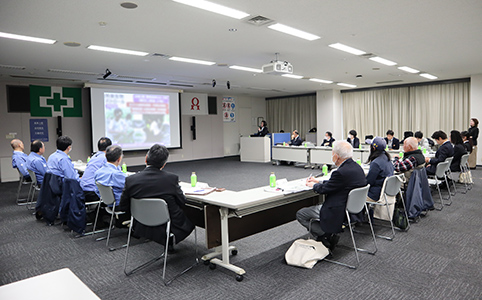
Sumitomo Riko has been hosting the Komaki City Partnership Dialogue since fiscal year 2023, promoting collaboration among various sectors—including businesses, government agencies, civic organizations, and universities—to invigorate nature conservation activities in Komaki City and enhance efforts to live in harmony with nature.
Related Information
Engagement with the Northern Owari Ecosystem Network Council
In Aichi Prefecture, Japan, where the Komaki Plant is located, efforts are underway to promote the formation of ecosystem networks by dividing the prefecture into nine regions and establishing Ecosystem Network Councils that bring together local universities, non-profit organizations, businesses, and government agencies in each area. As a member of the Northern Owari Ecosystem Network Council, Sumitomo Riko is committed to advancing the development of regional ecosystem networks.
Initiatives for Environmental Education on Living in Harmony with Nature
Environmental Lecture for University Students
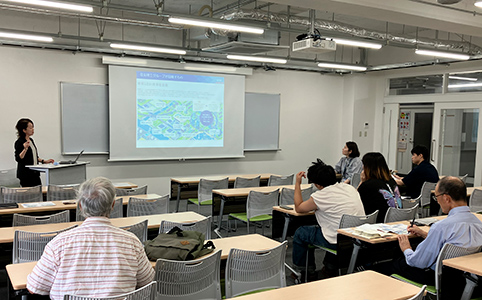
In June 2024, employees from Sumitomo Riko delivered a guest lecture titled "Introduction to Environmental Symbiosis and Satoyama Sustainable Development Goals (SDGs)" at Nagoya University of Economics. This lecture aimed to highlight our initiatives for creating a society in harmony with nature, detailing ongoing activities that we are implementing to foster a sustainable relationship with the environment.
Furthermore, this event was part of a broader effort to promote local initiatives for environmental coexistence, engaging various sectors in the Komaki area, including businesses, government, civic organizations, and educational institutions. To deepen the discussion, the employees who delivered the lecture actively engaged with students and faculty, facilitating lively conversations about Corporate Social Responsibility (CSR) and the principles of environmental symbiosis.
Furthermore, this event was part of a broader effort to promote local initiatives for environmental coexistence, engaging various sectors in the Komaki area, including businesses, government, civic organizations, and educational institutions. To deepen the discussion, the employees who delivered the lecture actively engaged with students and faculty, facilitating lively conversations about Corporate Social Responsibility (CSR) and the principles of environmental symbiosis.
Environmental Workshop at Komaki Kodomo Mirai Daigaku (Komaki Kids College)
In August 2024, Sumitomo Riko and Epson Sales Japan Corporation co-hosted a workshop titled Komaki Kodomo Mirai Daigaku* for elementary and middle school students in Komaki City. During the workshop, participants engaged in experiential learning centered around the theme "Let's Think About SDGs through Paper," which included hands-on craft activities utilizing recycled paper.
*Workshops organized by Komaki City for elementary and middle school students to learn about various aspects of SDGs and society from local businesses and organizations.
*Workshops organized by Komaki City for elementary and middle school students to learn about various aspects of SDGs and society from local businesses and organizations.
Related information
Efforts to Sustain Natural Capital in the Supply Chain
The Sumitomo Riko Group is dedicated to reducing environmental impacts across our supply chain. To preserve natural rubber, a vital component of our products and an essential aspect of natural capital, we joined the Global Platform for Sustainable Natural Rubber (GPSNR) in July 2022. Following this, we established the Procurement Policy for Sustainable Natural Rubber.
Related information
Related information
Certifications and Collaborations Related to Biodiversity
Sumitomo Riko Forest Recognized as a Nature-Symbiosis Site
The Omine-kogen Biodiversity Conservation Area, for which Sumitomo Riko has a foster parent agreement, was designated as a Nationally Certified Sustainably Managed Natural Site by the Ministry of the Environment in FY2024.
Situated in the northern part of Ikeda Town, Kita-azumi District, Nagano Prefecture, at an elevation of approximately 1,000 meters and covering an area of about 116 hectares, this area is home to 18 species of wild animals listed on national and regional red lists.
As a member of the Omine-kogen Satoyama Management and Utilization Promotion Council, we are committed to the sustainable stewardship of the satoyama and the preservation of the natural environment.
*The Nationally Certified Sustainably Managed Natural Sites program recognizes areas where biodiversity is conserved through private sector initiatives, aiming to achieve the "30by30" target. The 30by30 initiative is a global effort urging governments to designate 30% of the planet's land and ocean as protected areas by 2030.
Situated in the northern part of Ikeda Town, Kita-azumi District, Nagano Prefecture, at an elevation of approximately 1,000 meters and covering an area of about 116 hectares, this area is home to 18 species of wild animals listed on national and regional red lists.
As a member of the Omine-kogen Satoyama Management and Utilization Promotion Council, we are committed to the sustainable stewardship of the satoyama and the preservation of the natural environment.
*The Nationally Certified Sustainably Managed Natural Sites program recognizes areas where biodiversity is conserved through private sector initiatives, aiming to achieve the "30by30" target. The 30by30 initiative is a global effort urging governments to designate 30% of the planet's land and ocean as protected areas by 2030.
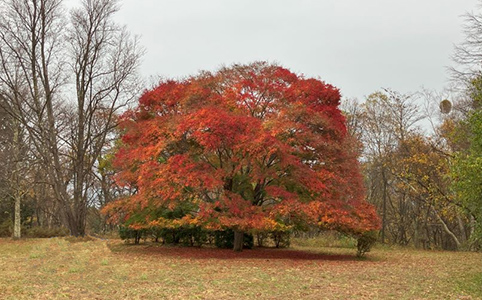
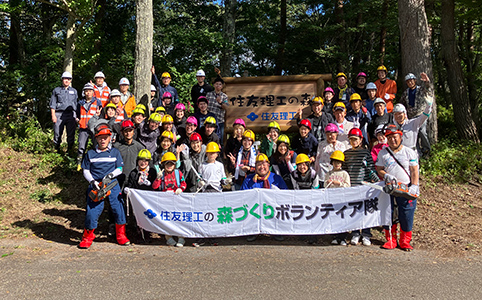
Related information
Partnership Agreement with Komaki City for a Society in Harmony with Nature
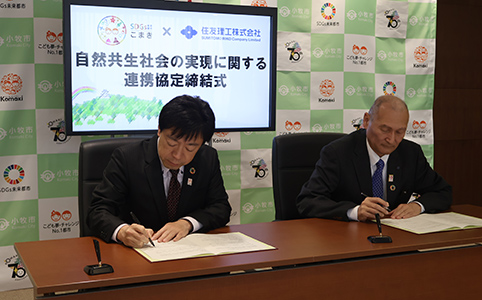
In February 2025, Sumitomo Riko signed a Partnership Agreement with Komaki City, Aichi Prefecture, for the Realization of a Society in Harmony with Nature. This agreement promotes collaboration on initiatives aimed at biodiversity conservation and the preservation of local environments that provide habitats for diverse species.
Related information
Aichi Biodiversity Company Certification
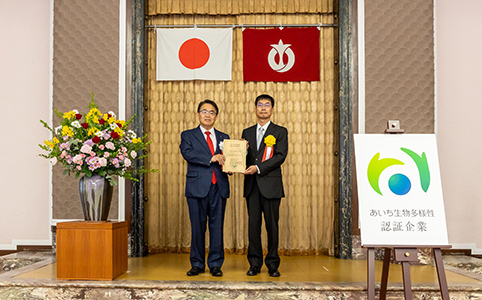
Aichi Prefecture, home to the Sumitomo Riko Komaki Plant, has established the Aichi Biodiversity Company Certification Program to promote corporate initiatives for biodiversity conservation and recognize companies that demonstrate outstanding efforts.
Sumitomo Riko received the certification in November 2023.
Sumitomo Riko received the certification in November 2023.
Related information
Related information
Participation in the Keidanren Initiative for Biodiversity Conservation
In March 2024, Sumitomo Riko, a company dedicated to fostering biodiversity for the future, joined the Keidanren Initiative for Biodiversity Conservation, organized by the Keidanren Nature Conservation Council. This participation focuses on the items outlined in the Keidanren Declaration for Biodiversity and Guideline (revised) and supports the overall objectives of the initiative.
Related information
Future Issues and Responses
The Sumitomo Riko Group is committed to communicating the connections between our business activities and Earth's resources, the natural environment, and biodiversity. We will inform our employees about the impacts of our activities on the environment and the initiatives required to protect it. Our goal is to help employees view efforts toward coexistence with the environment not just as a social contribution, but as an essential part of our business, empowering each individual to take personal ownership of these initiatives.
Additionally, each of our locations will establish activity policies tailored to the unique characteristics of their local communities, actively promoting initiatives that are grounded in those areas.
Furthermore, we are dedicated to understanding the environmental impacts of the raw materials and components we use as we strive for coexistence with nature throughout our entire value chain.
Additionally, each of our locations will establish activity policies tailored to the unique characteristics of their local communities, actively promoting initiatives that are grounded in those areas.
Furthermore, we are dedicated to understanding the environmental impacts of the raw materials and components we use as we strive for coexistence with nature throughout our entire value chain.

